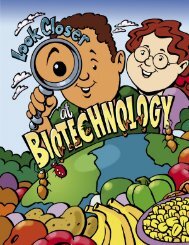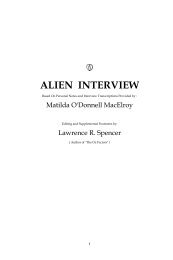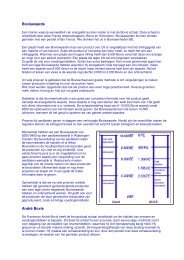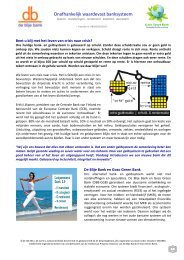De verborgen gevaren van vaccinaties - WantToKnow.nl
De verborgen gevaren van vaccinaties - WantToKnow.nl
De verborgen gevaren van vaccinaties - WantToKnow.nl
You also want an ePaper? Increase the reach of your titles
YUMPU automatically turns print PDFs into web optimized ePapers that Google loves.
de 85-plussers zelfs de helft,” stellen experts Harald Verhaar en Peter <strong>van</strong> Roermund. Zij zijn<br />
artsen <strong>van</strong> het Universitair Medisch Centrum Utrecht en zitten in de wetenschappelijke raad<br />
<strong>van</strong> de Osteoporose Stichting.<br />
Ze voegen toe dat botontkalking bij de helft <strong>van</strong> de polsbreuken de boosdoener is en bij<br />
heupfracturen zelfs 80 procent. “Iemand <strong>van</strong> 50 die een pols breekt, heeft daarna twee keer<br />
zoveel kans op een heupbreuk,”zegt Verhaar. “Botontkalking trekt door het hele skelet.”[…]<br />
Ik denk zelf dat het niet alleen een kwestie is <strong>van</strong> te weinig essentiële stoffen binnenkrijgen,<br />
maar dat er ook meespeelt dat er depleties worden veroorzaakt door onder meer <strong>vaccinaties</strong><br />
met aluminiumhoudende vaccins.<br />
Op 17-4-2009 ontving ik een interessant artikel <strong>van</strong> Natrual.News.com, onder de titel<br />
Pediatricians Finally Admit Children Need More Vitamin D. Ik zal het hele stuk citeren:<br />
[…] The American Academy of Pediatrics (AAP) has doubled its recommended daily vitamin<br />
D intake foor children and adolescents, citing concern over rising levels of rickets as well as<br />
new evidence that higher vitamin D intake may help prevent against a wide variety of diseases.<br />
Vitamin D plays a critical role in bone health. <strong>De</strong>ficiency in children can lead to the bonesoftening<br />
disease rickets, which can cause permanent deformity.<br />
“New evidence [also] supports a potential role for vitamin D in maintaining innate immunity<br />
and preventing diseases such as diabetes and cancer,”the new policy reads.<br />
The policy increases the recommended vitamin D intake for children and adolescents from<br />
200 IU to 400 IU per day.<br />
“The recommendation is going to be essentially a supplement for every child and adolescent<br />
in the United States,”said co-author Frank R. Greer, a University of Wisconsin pediatrician.<br />
Greer noted that for a variety of reasons, children often have trouble getting all of their<br />
vitamin D from natural sources. While the body synthesizes the vitamin naturally from<br />
su<strong>nl</strong>ight, concern over skin cancer risk has led many parents to keep from playing outdoors<br />
except when wearing sunscreen.<br />
Sunscreen blocks the ultraviolet rays that stimulate the skin to produce vitamin D.<br />
Infants who don’t get eneogh sun are at an especially high risk for vitamin D deficiency, since<br />
breast milk is very low in the vitamin.<br />
“Breastfeeding babies are at particular risk because there’s not much vitamin D in human<br />
milk,” Greer said. “Any kids whose mothers are vitamin D deficient … are at risk for getting<br />
full-blown rickets. [The presence of rickets] usually becomes obvious when the child begins to<br />
walk.”<br />
Pediatrician Steven Abams, who has helped write other AAP guidelines, stressed that the new<br />
policy should not be interpreted as a recommendation to stop breastfeeding.<br />
“Giving vitamines to your babies is in no way saying that breastfeeding isn’t adequate,”<br />
Abrams said […]<br />
79







